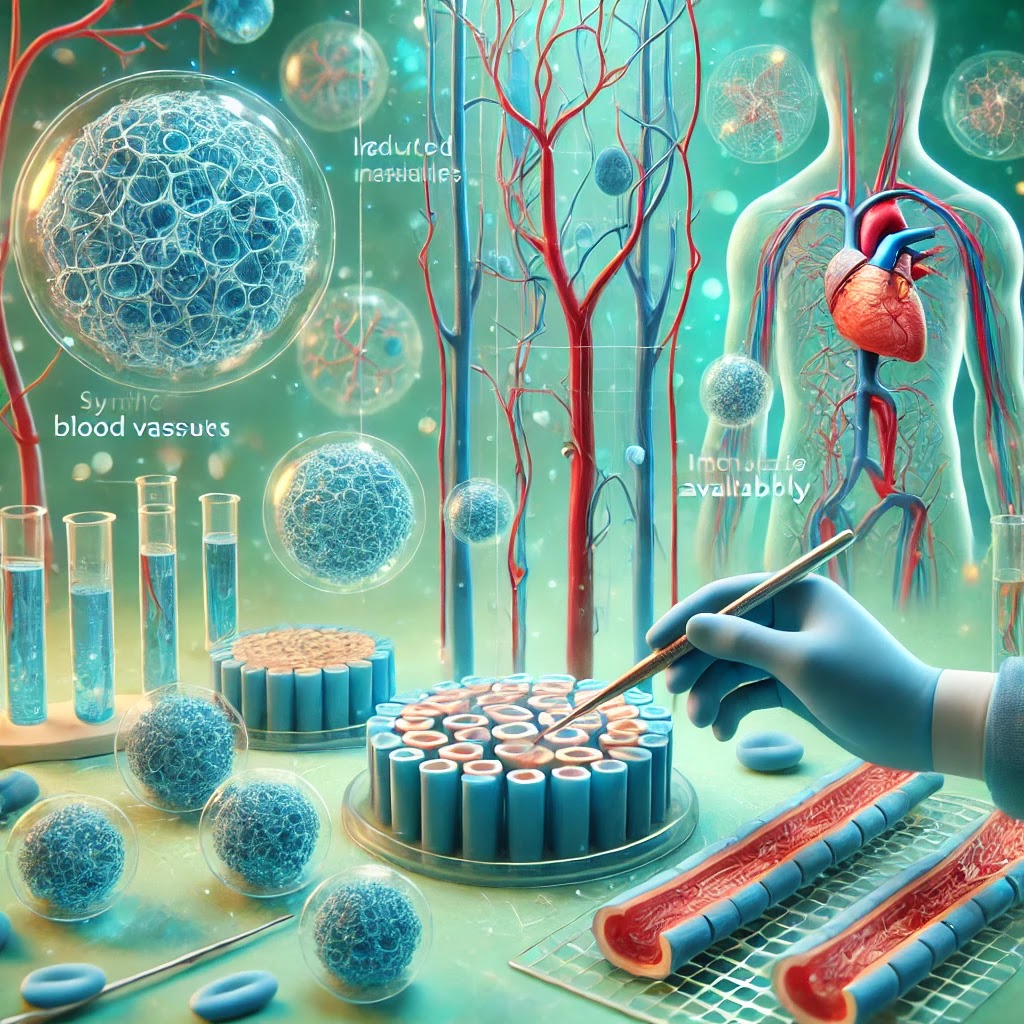Revolutionizing Medicine: The Promise and Challenges of Synthetic Blood Vessels and Nerve Tissues
The world of medical science is constantly evolving, with synthetic materials playing an increasingly prominent role. Two groundbreaking developments are synthetic blood vessels and synthetic nerve tissues, which are providing new solutions for vascular and nerve-related ailments. These innovations not only open doors for patients in need of transplants or repairs but also promise to revolutionize the fields of surgery and regenerative medicine. In this article, we’ll explore the processes behind synthetic blood vessels and nerve tissue, their importance, advantages, and the challenges they still face.
The Process of Creating Synthetic Blood Vessels and Nerve Tissues
Synthetic Blood Vessels
Synthetic blood vessels are commonly made using biocompatible materials like polytetrafluoroethylene (PTFE) or Dacron, and in some cases, they are reinforced with biodegradable polymers to support tissue regeneration. The process involves:
- Design and Fabrication: Using 3D printing or electrospinning to create a scaffold that mimics the structure of natural blood vessels.
- Biocompatibility Testing: Ensuring the materials do not induce a strong immune response or clotting when implanted in the body.
- Endothelialization: In some cases, the synthetic vessel is lined with endothelial cells to promote integration with the body and reduce the risk of complications.
Synthetic Nerve Tissue
Creating synthetic nerve tissues involves similar principles but requires even greater precision due to the complexity of the nervous system. Techniques include:
- Scaffold Development: 3D printing or electrospinning to create a scaffold that mimics the natural extracellular matrix of nerve tissues.
- Cell Seeding: Stem cells or Schwann cells (cells that form the protective myelin sheath around nerves) are seeded onto the scaffold.
- Neurotrophic Factors: These are growth factors that support nerve growth, and they are often incorporated into the scaffold to facilitate the regeneration of nerve tissue.
- Electrical Stimulation: This process can be used to encourage nerve growth and regeneration within the synthetic tissue.
Importance of Synthetic Blood Vessels and Nerve Tissues
Addressing Shortages
One of the most significant advantages of synthetic blood vessels and nerve tissues is that they help address the shortage of available donor tissues. Finding compatible donors can be a lengthy process, so synthetics can fill a vital role.
Reduced Risk of Rejection
Since synthetic materials can be engineered to be biocompatible, the risk of rejection is minimized. This quality is especially valuable for patients with compromised immune systems.
Advancement in Regenerative Medicine
Synthetic tissues enable researchers to experiment and develop new methods for repairing or even regrowing tissues and organs, paving the way for future advancements in regenerative medicine.
Advantages of Synthetic Blood Vessels and Nerve Tissues
- Immediate Availability: Unlike donor tissues, synthetic alternatives are available on demand, reducing waiting times and allowing for quicker intervention.
- Customizability: Synthetic materials can be customized to suit individual patient needs. The size, shape, and properties can be altered, which is especially beneficial for complex cases.
- Consistency: With synthetic materials, there is no risk of variability between samples, which is common with biological tissues.
- Lower Risk of Disease Transmission: Using synthetic materials avoids the risk of transmitting diseases that can be present in donor tissues.
Disadvantages and Challenges
- Limited Longevity: Although synthetic blood vessels and nerve tissues are advancing, they often have a limited lifespan compared to natural tissues. Over time, synthetic materials may degrade or lose functionality.
- Lack of Full Integration: In some cases, synthetic tissues may not fully integrate with the body’s natural systems. This can lead to complications such as clotting in synthetic blood vessels or incomplete nerve regeneration.
- Potential for Inflammation: Even though these materials are designed to be biocompatible, there is still a risk of inflammation or immune response, which can lead to complications.
- High Cost and Accessibility: The production process can be expensive, which may limit access to these advanced treatments, especially in regions with limited healthcare resources.
Conclusion
Synthetic blood vessels and nerve tissues represent incredible strides in modern medicine, offering hope to patients who might otherwise face limited treatment options. However, while these innovations bring many advantages, they also come with their own set of challenges. Continued research is essential to overcome these obstacles and enhance the longevity, integration, and accessibility of synthetic tissues. As technology evolves, synthetic solutions will undoubtedly become even more integral to the future of medical science, improving countless lives along the way.
Written by Mithulaa
BioVision
Exploring the Future of Biotechnology


Comments
Post a Comment